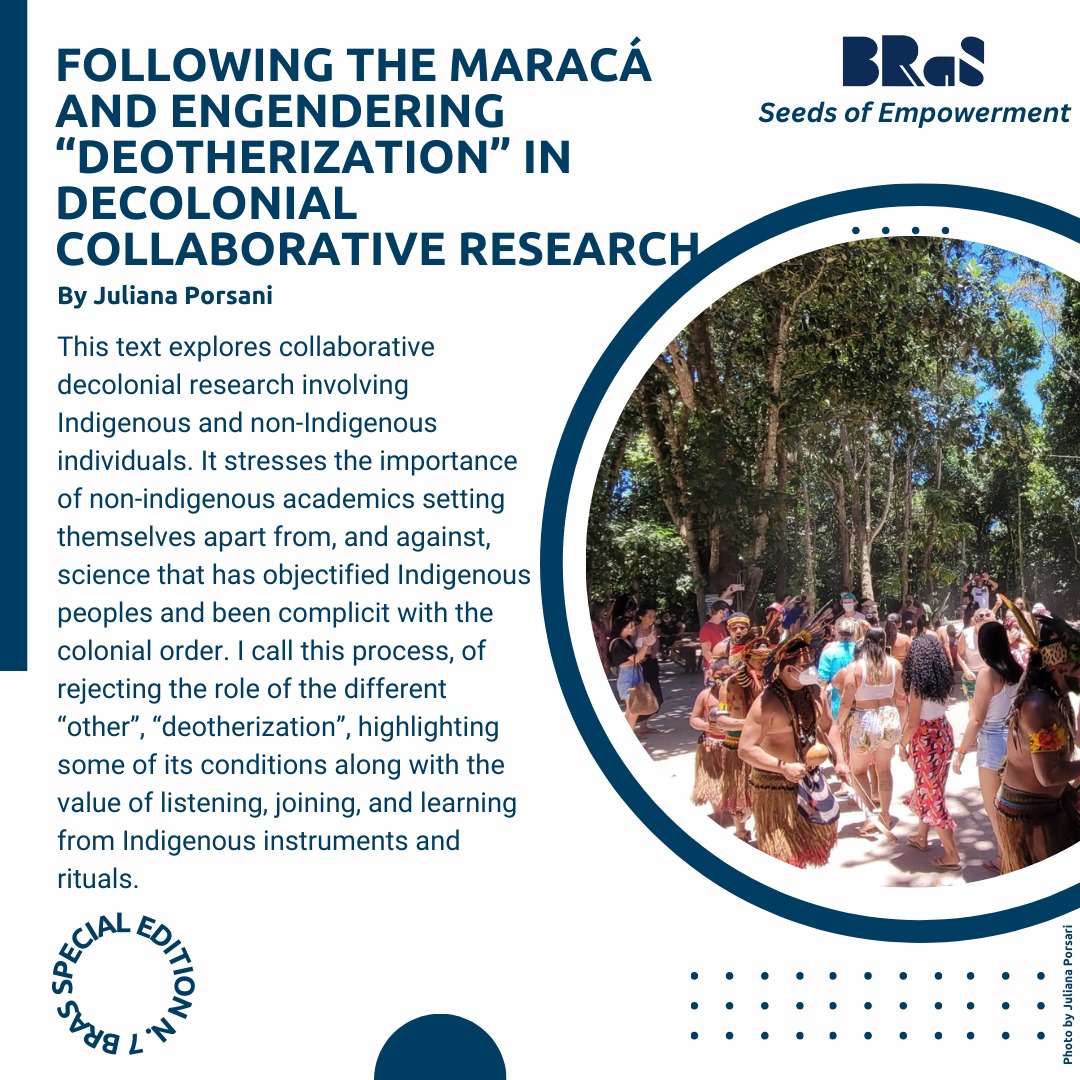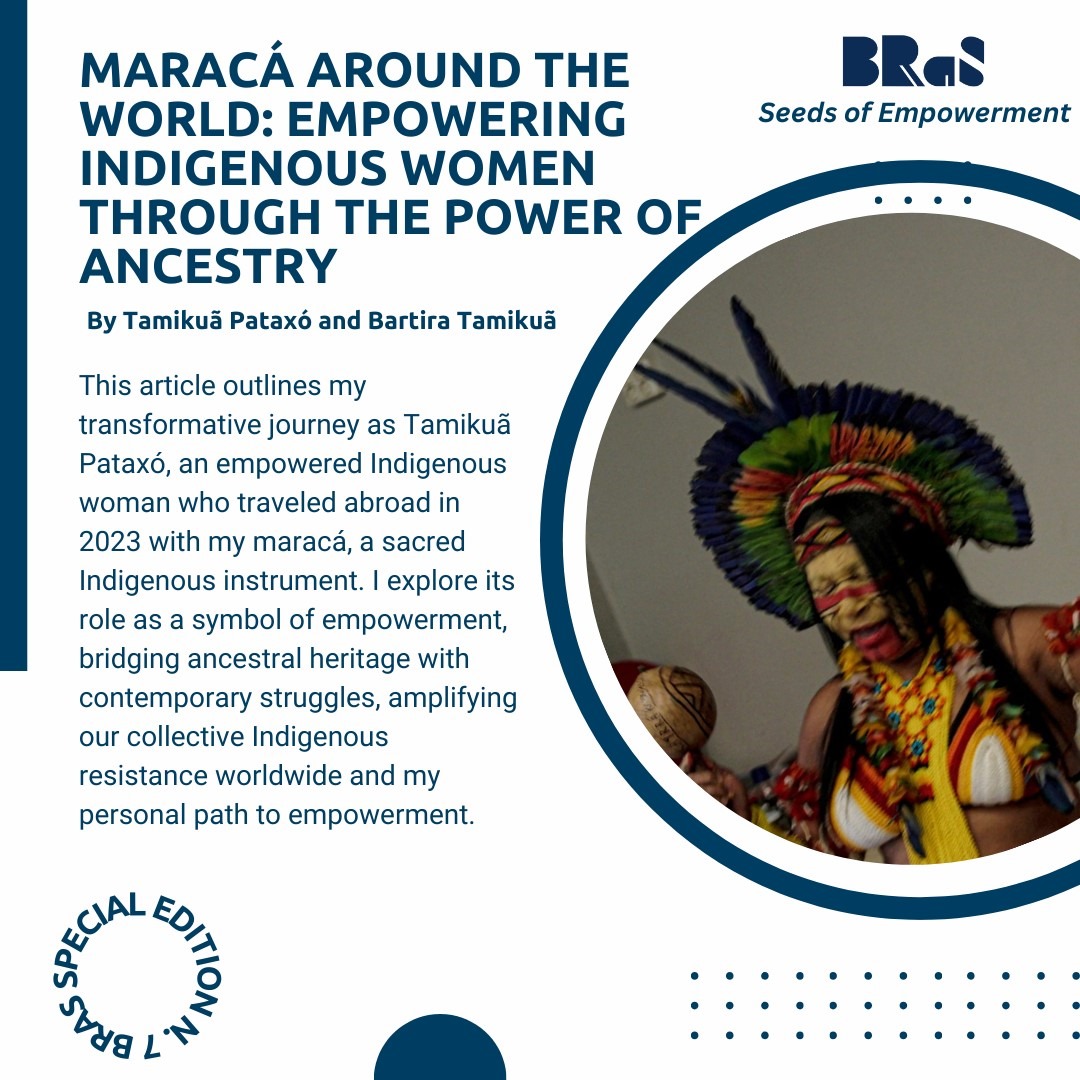As a research and studies center, BRaS aims at promoting and supporting collaborative works. In the week we celebrate international women’s day, we have invited three researchers to join us for the Special Edition (SE) No. 6: Women of Brazils. In the next five weeks, we will present some of the different women who are part of the Brazilian reality: migrant, trans, black, indigenous, and high school students. Today the researcher Claudia presents a text about Brazilian migrant women. We hope you all enjoy the reading!
Claudia Pieres de Castro and Helena Vetorazo
Reviewed by Matheus Lucas Hebling
Organized by Claudia Pires de Castro and Helena Vetorazo
by Claudia Pires de Castro*
Although United Nations reports on Labor Supply and Migration in Europe indicated the role of women in migration as early as the 1970s, It is important to note that the increase in the number of female migrants has not been accompanied by specific policies to support female migration. As noted by Engle (2004), the history of migration is “HIStory” and not “HERstory,” meaning that governments perceive female migration as an appendix to male migration.
As a Brazilian migrant, I consider that we still have a variable, introduced by Pero Vaz de Caminha, that persists to this day. In his first letter to the king of Portugal, Caminha differentiated between men and women by directing his gaze towards their biological sexes, which he called “naked shame.” This gaze is still present and feeds the imaginary hypersexualization of Brazilian women, being used as a disturbing and tormenting element, turning migrants into invisible and objectified beings or demonized beings.
In Austria, where I settled 13 years ago, I had the opportunity to experience firsthand many of these problems, making them the focus of my research. Since I was considered overqualified for the available job positions, I decided to resume my studies, and since 2017 I have been researching the situation of Brazilian migrants in this country. Within this group, 63% are women. Not infrequently, female migrants experience the effects of this imaginary objectification and opacity of the female condition. Among the various challenges faced in the host country, one of the most complicated is exactly that of financial independence, as it is essential for the autonomy and freedom of any person in modern societies. The variables “woman” and “migrant” translate into factors that can lead to the devaluation of skills and limitation of job opportunities, making the Austrian labor market especially inhospitable for these Brazilian women. In other words, each intersecting variable – race, marital status, maternity, age, education, and qualification, among others – is a gateway to discrimination and a factor that can lead to the devaluation of skills and limit job opportunities, making the Austrian labor market especially challenging for these Brazilian women.
The process of entering the labor market experienced by migrants is different from the process experienced by citizens of host countries. It is a difficult process full of episodes of overcoming obstacles. Hiring a foreigner can be very bureaucratic for companies, often requiring a justification for why the company is “importing” labor, especially in countries with high unemployment rates. In the case of migrant women, the greater responsibility and amount of time spent on family and domestic work can lead to lower participation in the labor market and discourage migrants from investing in their human capital (Becker, 1985).
In my research, I have identified the importance of migrant networks for exchanging information and clarifying issues related to the Austrian labor market, including bureaucratic procedures and job vacancies. Proficiency in the host country’s language is a facilitator, both in the integration process and in entering the labor market. However, the qualifications of migrants, especially women migrants, do not necessarily have the same positive impact on the process.
I also found that Brazilian migrant women have high expectations regarding the eventual ease of finding work and little knowledge of the difficulties and barriers that mainly affect the most qualified migrants – i.e., those with undergraduate and graduate degrees who marry Austrian or European Union citizens, wives/partners of expatriate, and women who enter Austria as students and end up staying after completing their studies. For women with dual citizenship – Brazilian and from a European Union country – the situation is a little easier, but it still cannot be compared to that of the citizen of the host country, or even to Brazilian male migrants.
Having Austrian or European citizenship may seem advantageous for obtaining rights closer to those enjoyed by local citizens and no longer having to participate in the expensive and bureaucratic visa renewal process. However, this decision can lead to different pitfalls in the life of the migrant woman. The fight for an Austrian or European passport can lead these women to formalize a relationship, which will generate a relaxation with institutional bureaucracy, but which can lead them to a condition of no longer being the owner of their destiny, as it is subordinate to the partner. This struggle can also lead migrant women to renounce their Brazilian citizenship, which complicates their personal and civil life in their country of origin, bringing problems such as inheritance rights, property purchases, etc. But European or Austrian citizenship does not necessarily make a migrant woman seen as a citizen of that country in everyday life. The migrant citizen will be seen as a migrant the moment she lets slip any aspect that guarantees her social homogenization, be it color, accent, mannerisms, language, or body language.

Another aspect to be pointed out is the validation of diplomas, which is a complicated and expensive process. Often, despite being master’s or doctoral degree holders, migrant women will have to return to university to take undergraduate courses. The costs of both returning to university and validating their diploma are added to the loss of income, as these migrants will have to give up hours that could be worked. As this process demands time and financial resources, rarities in the life of a migrant, especially newcomers, it is projected for a future time when migrants hope that their situation in the host country will already be stabilized. However, this stabilization often takes a long time to come, and when it does come, it is often no longer interesting, as it may come during pregnancy or while caring for small children, which means, greater responsibilities and invisible domestic care work.
Studies on migration point out that in terms of the risk of unemployment, the probability for female migrants is generally higher than that of their male national partners (Reyneri and Fullin, 2011). According to these studies, women are more likely than men to experience downward occupational mobility at the time of migration, with only a small proportion later going beyond the traditionally occupied occupations for female migrants, such as house cleaning and domestic services (Vidal-Coso and Miret-Gamundi, 2014).
In studying occupational mobility from the intragenerational perspective of Brazilian migrants in Austria, I compared my last job in Brazil to the first job upon arrival in Austria, and the current job in Austria of these migrants. I decided to make a gender cut to understand the dynamics of occupational mobility for Brazilian migrant women compared to Brazilian migrant men. Upon analyzing the data, I came across some interesting information. When we look at occupational mobility when leaving Brazil and arriving in Austria, we can see that lateral mobility is relatively similar between men (48%) and women (44%). We begin to notice a slightly more significant difference in downward mobility, experienced by 43% of women and 36% of men, meaning that Brazilian female migrants experience more status deterioration than men. On the other hand, upward mobility is experienced by 16% of men and only 9% of women. In other words, when leaving Brazil and arriving in Austria, women experience less of an improvement in status than Brazilian men. The situation becomes a bit more complicated when we analyze occupational mobility when leaving Brazil with current occupational mobility, as we see that 28% of men show upward mobility, while only 12% of women show upward mobility, indicating that even after living in Austria for some years, Brazilian migrant women continue to experience less of an improvement in status than Brazilian migrant men.
My investigations have verified some relevant information on different aspects of migrants’ lives in Austria. In this text, specifically, I address some points on the characteristics and perspectives of Brazilian female migrants in the process of entering the job market. The results of my studies reveal some new questions that encourage me to continue my research with these women. I believe that conducting further research on the relationships between occupational mobility and the integration of Brazilian women in the host country is of utmost importance and relevance. Moreover, delving deeper into comparisons with the occupational mobility experience of Brazilian women migrants from other countries would allow for identifying structural trends in these migration processes, particularly in the more accurate characterization of the important relationships between occupational mobility and maternity, and occupational mobility and intercultural marriage.
* Claudia Pires de Castro has completed a Master of Arts (MA) degree in Journalism and Communication Sciences from the University of Vienna, and is currently a Master’s student in Political Science at the same university. Additionally, she also holds a Postgraduate degree in Marketing from the Higher School of Advertising and Marketing (ESPM). She is a member of the Research Group DIASPOTICS: Migrações Transnacionais e Comunicação Intercultural (UFRJ), a member of the Research Group Labhima: Laboratório de História e Meio Ambiente – Labhima (UNESP) and Head of BRaS Research Group Social Media Studies.
Castro, Claudia Pires de. 2023. "Special Edition Women of Brazils. Women migrants: new rights and old issues for renewed citizenship". Brazilian Research and Studies Blog. ISSN 2701-4924. Vol. 4 Num. 3. Available at: https://www.bras-center.com/women-migrants-new-rights-and-old-issues-for-renewed-citizenship/, accessed on: April 16, 2025.







